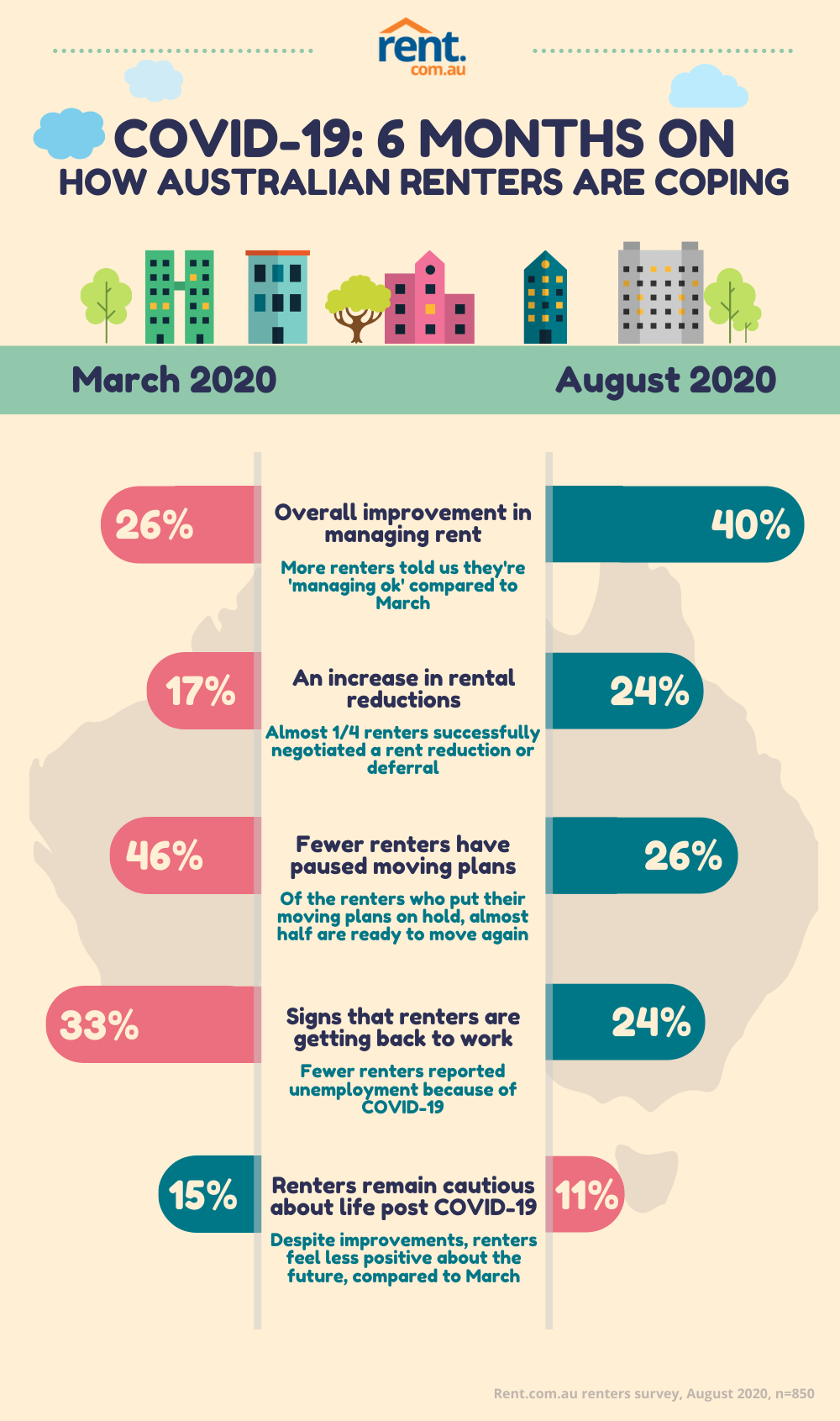Australia’s residential rental property market is showing signs of recovery from the economic impact of the COVID-19 pandemic, but this has failed to ease most renters’ concerns about their future, the latest study from rental property website Rent.com.au reveals.
According to the report, 40% of renters are now finding it easier to manage their lease payments, up from 26% when the firm conducted its first survey last March. However, only 11% of the respondents feel optimistic about life post-pandemic, compared to 15% in March.
“Soon after we ran our first survey, we hit the peak of the lockdown period for most of Australia, and – to no surprise – the number of renters looking for properties dropped right off,” says Greg Bader, chief executive officer of Rent.com.au. “Towards the end of March and April, we started to see the real impact of those lockdowns impacting our own customer activities.”
“But as restrictions have slowly relaxed across most of Australia (except in places like Victoria), more renters are starting to re-enter the market and more have returned to employment, which is making rental payments easier for much of the market,” he says.
Has Australia’s residential rental property market recovered?
According to Rent.com.au’s August survey, 24% of respondents say they remain unemployed due to the COVID-19 pandemic, decreasing from 33% in March. This has resulted in an overall improvement in how tenants are managing their rental payments.
However, Bader says it is still hard to tell if the country’s overall residential rental property market has already recovered.
“Right now, it’s a real mixed bag across the states, which isn’t surprising given the disparate levels of restrictions and recovery,” he says. “In New South Wales, Queensland, and Western Australia, we’re seeing increased activity as the economies start to open. Renter activity is almost back to pre-COVID-19 levels.”
Bader says the situation is different in Victoria. “Restrictions have made it harder to move between properties, but there also seems to be a broader sentiment of uncertainty and concern across the community, with more of a focus on health, employment, and general wellbeing,” he says.
What is the impact of the COVID-19 pandemic on the rental property market moving forward?
At the height of the pandemic, many renters unsurprisingly postponed their moving plans. Almost half of those surveyed last March said they have placed moving plans on hold indefinitely. The figure is down to 26% in the recent survey as restrictions relax and renters’ employment situation improves.
However, Bader says it is still hard to predict how this will impact the overall rental property market in the near future.
“The whole ‘work from home’ phenomenon has been really interesting, and many are predicting that this will have an impact on CBD properties,” he says. “People are looking for more space or room in their homes and there’s less of a reliance on proximity to work. This should mean that good properties in the 2 to 10km rings do well, as they generally do.”
Bader adds that markets that rely heavily on international and intrastate tenants will likely struggle until travel restrictions lift.
He says Western Australia is among the states seeing an upsurge in the rental property sector.
“Western Australia has a really interesting market right now,” he says. “It’s one of the states that has the least amount of restrictions (intrastate) and we’re seeing rental stock at record low levels. There are around 4,000 properties available for rent, which is about half the number from 12 months ago.”
Why do renters feel less optimistic about the future?
Despite the general improvement in their financial situation, more renters feel less secure about their future, the survey finds.
Only 11% of respondents felt hopeful about life post-pandemic, dropping from 15% in March. Bader says this sentiment is a result of several factors.
“There are a bunch of external factors that are leaving renters with a general feeling of less control than they would like,” he says. “Factors like unemployment, uncertainty, changing rules on JobKeeper and JobSeeker, and restrictions are all playing a role.
“But I think the main reason is that when COVID-19 first hit, most of us didn’t expect the impact to be so profound or to continue for so long. We also know that renters over index in industries and locations that have been most impacted by COVID-19.”
In the latest survey, Rent.com.au interviewed about 800 renters to gain insight into the continued impact of the pandemic on their ability to pay rent, how they felt state governments have supported them during the difficult time, and their plans and outlook for the future. The results are summarized in the infographic below.
